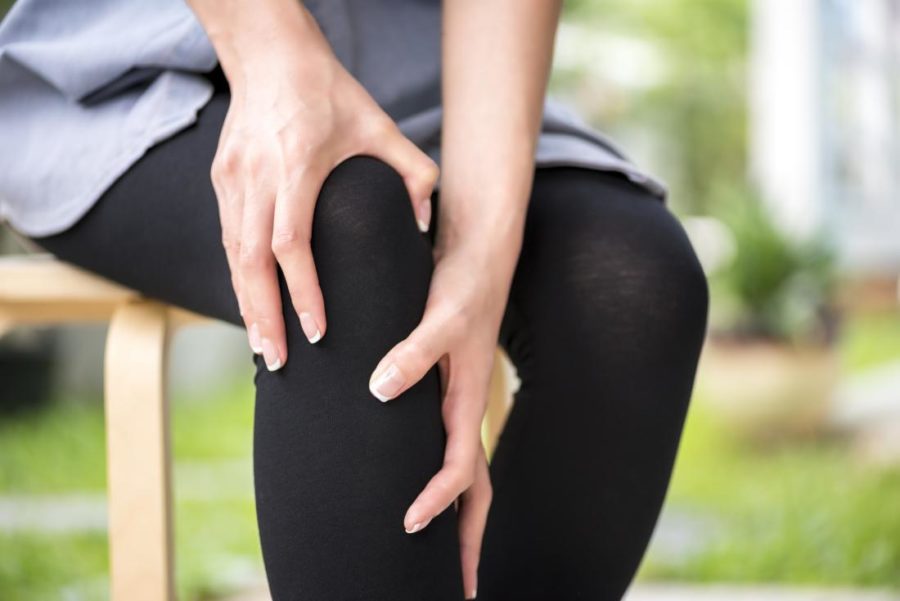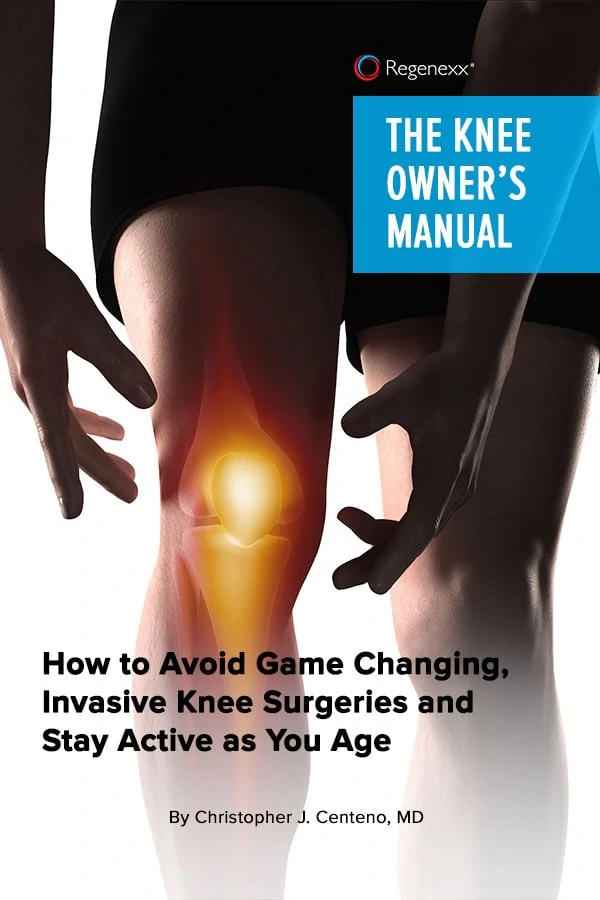Ski and snowboard season is back and so are knee injuries and instability. Ever wonder why your knee feels unstable? What determines knee stability? Can sciatica cause knee instability? How do you treat knee instability? Let’s dig in.
Why Does My Knee Feel Unstable?
Knee stability occurs when the joint moves with all the surfaces in general alignment all the time. Instability occurs when the joint is out of alignment and susceptible to injury. There are varying degrees of instability. With mild instability, there may be excessive movement of the joint with walking whereas with more advanced instability the knee may actually buckle or give out. Knee stability is dependent upon two major factors: Ligaments and Muscles
Ligaments
Ligaments are thick bands of connective tissue that connect one bone to another. They are the duct tape that keeps our knees stable. Ligaments are the principal stabilizer in the knee. There are four major ligaments in the knee: ACL, PCL, MCL, LCL. All are susceptible to injury and can be stretched, partially torn or completely torn. Injuries can occur from trauma, joint misalignment. and repetitive activities (1). Unlike a rubber band that recoils to its original state after being stretched, ligaments oftentimes become loose after repetitive activity or injury. A loose or torn knee ligament can compromise the stability of the knee joint (2). Patients often complain that their knee feels loose.
Muscles
Large and small muscles coordinate to provide constant input to the joint to keep it stable and aligned as we move. Muscles are the secondary stabilizers. The spinal nerves transmit information from the brain to the muscles to contract. If the nerve signal to the muscle is diminished, weakness can occur. Disc herniations, disc protrusions, small joint overgrowth, spinal stenosis, and slipped discs can compromise the spinal nerve signal to muscles. Muscle weakness compromises the stability of the knee joint often, with patients experiencing the leg buckling, or giving out (3).
Another important cause of knee instability is arthritis. In patients with severe knee arthritis, there is a 72% incidence of self-reported knee instability(4).
Ready to take your life back from knee pain, without surgery and medication?
See if you’re a candidate for Regenexx Nex Gen Procedures at Centeno-Schultz Clinic
The Importance of Knee Stability
You may be thinking that that the fact that your knee feels unstable is not a big deal. Is knee instability important? Absolutely, as it can lead to significant injury and possible surgery. A great example of instability is a car’s wheel whose lug nuts have become loose. The wheel is unstable and over time the tire will wear abnormally and most likely sustain damage to the sidewall and tread. Furthermore, the car will lack optimal control at higher speeds and in rain and snow. A knee that is unstable either due to ligament laxity or muscle weakness, is at risk for cartilage, ligament and meniscus injury, and the possible need for knee replacement.
Can Sciatica Cause Knee Instability?
Sciatica is radiating leg pain that can extend down into the foot with accompanying numbness, tingling and weakness (5). It is typically due to low back spine injuries such as disc protrusion or herniation that compress the spinal nerves. Diminished spinal nerve signal to the muscles in the lower extremities can result in weakness which in turn can cause knee instability. A good clinical example is the iliotibial band (ITB) that arises from the gluteal muscles and is responsible for the stability of the lateral (outside) knee joint. Sciatica can cause gluteal muscle weakness, which in turn can result in lateral knee instability.
How Do You Treat Knee Instability?
The best results are obtained when addressing the underlying cause of instability.
Ligaments
Ligament laxity or injury can be detected during physical examination. A better test for ligament laxity or injury is a stress ultrasound examination where a physician applies stress to the joint and ligaments while scanning with ultrasound. This provides critical information that is not available from an MRI. Both knees must be evaluated. To better understand stress ultrasound please click on the video below.
First-line treatment for acute ligament injuries includes rest, activity modification, elevation, and compression. Physical therapy and bracing are helpful. PRP is effective in the treatment of loose or injured ligaments (6). At the Centeno-Schultz Clinic, we have extensive experience in the treatment of ligament injuries. We pioneered the use of bone marrow-derived stem cells in the treatment of ACL tears (7). This is a complex procedure that your family physician or orthopedic surgeon can not perform. To watch one of my ACL injections performed at the Centeno-Schultz Clinic please click on the video below.
Muscle Weakness
First-line treatment is physical therapy. If muscle strength fails to improve after conservative care, the nerve signal to the muscle may be compromised due to disc protrusion, disc herniation, or joint overgrowth. Accordingly, treatment should involve the evaluation and treatment of low back injuries. At the Centeno-Schultz Clinic, we have extensive experience in the treatment of knee instability and low back disorders. Treatment options include PRP and bone-derived stem cells. We demonstrated that PRP is a safer, longer-lasting option than steroids in the treatment of radiating leg pain due to disc injury (8).
In Conclusion
If your knee feels unstable, you likely have knee instability which can arise from many sources and puts the knee at risk for injury. Ligaments and muscles are the two principal determinants of knee stability. Ligaments are thick bands of connective tissue that connect bone to bone and are susceptible to injury. Stress ultrasound is useful in the evaluation of ligament integrity. Muscle strength can be compromised by low back disc herniations and protrusions that decrease the spinal nerve signal to the muscle. If conservative therapy including PT fails, PRP and stem cells are effective treatment options for knee instability. If left untreated, an unstable knee is at risk for additional injury and possible surgery including knee replacement.
__________
1. Hastings DE. Diagnosis and management of acute knee ligament injuries. Can Fam Physician. 1990;36:1169-89.
2.Kakarlapudi TK, Bickerstaff DR. Knee instability: isolated and complex. West J Med. 2001;174(4):266-72. doi: 10.1136/ewjm.174.4.266.
3.Abulhasan, J.F.; Grey, M.J. Anatomy and Physiology of Knee Stability. J. Funct. Morphol. Kinesiol. 2017, 2, 34.
4.Fleeton G, Harmer AR, Nairn L, et al. Self-Reported Knee Instability Before and After Total Knee Replacement Surgery. Arthritis Care Res (Hoboken). 2016;68(4):463-71. DOI: 10.1002/acr.22692.
5.Koes BW, van Tulder MW, Peul WC. Diagnosis and treatment of sciatica. BMJ. 2007;334(7607):1313-7. doi: 10.1136/bmj.39223.428495.BE.
6.Kia C, Baldino J, Bell R, Ramji A, Uyeki C, Mazzocca A. Platelet-Rich Plasma: Review of Current Literature on its Use for Tendon and Ligament Pathology. Curr Rev Musculoskelet Med. 2018;11(4):566-72. doi: 10.1007/s12178-018-9515-y
7.Centeno C, Markle J, Dodson E, et al. Symptomatic anterior cruciate ligament tears treated with percutaneous injection of autologous bone marrow concentrate and platelet products: a non-controlled registry study. J Transl Med. 2018;16(1):246. doi: 10.1186/s12967-018-1623-3.
8.Centeno C, Markle J, Dodson E, et al. The use of lumbar epidural injection of platelet lysate for treatment of radicular pain. J Exp Orthop. 2017;4(1):38. doi: 10.1186/s40634-017-0113-5.

